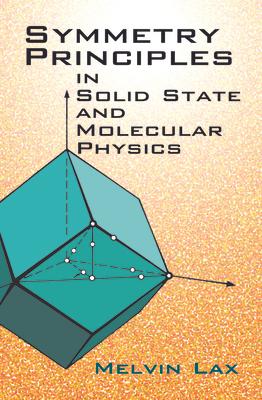
Book
Symmetry Principles in Solid State and Molecular Physics
by Melvin Lax
(Write a Review)
Paperback
$25.95
Professor Lax provides examples in optical absorption selection rules, spin-orbit coupling, and crystal field theory, plus a complete demonstration of projection techniques. He also develops short-cut and invariant methods for solving molecular vibration problems and for determining the form of crystal tensors; develops the translational properties of crystals, including Bravais lattices and space groups; and explains relevant applications to electron phonon scattering, optical absorption selection rules, electronic energy bands, electron dynamics, and effective Hamiltonians. To illustrate several of these topics, and to show the relation between the microscopic and macroscopic views of elasticity, the author presents a complete study of the diamond structure.
Among the unique features of this volume are its use of subgroup techniques, its consideration of the influence of time reversal on selection rules, its use of shell theorems and invariance techniques to construct the form of tensors, and its use of broken symmetry to relate the symmetry of valence and molecular orbitals to the symmetry of electron molecular wave functions. The book also contains more than 200 carefully selected problems.
Professor Lax provides examples in optical absorption selection rules, spin-orbit coupling, and crystal field theory, plus a complete demonstration of projection techniques. He also develops short-cut and invariant methods for solving molecular vibration problems and for determining the form of crystal tensors; develops the translational properties of crystals, including Bravais lattices and space groups; and explains relevant applications to electron phonon scattering, optical absorption selection rules, electronic energy bands, electron dynamics, and effective Hamiltonians. To illustrate several of these topics, and to show the relation between the microscopic and macroscopic views of elasticity, the author presents a complete study of the diamond structure.
Among the unique features of this volume are its use of subgroup techniques, its consideration of the influence of time reversal on selection rules, its use of shell theorems and invariance techniques to construct the form of tensors, and its use of broken symmetry to relate the symmetry of valence and molecular orbitals to the symmetry of electron molecular wave functions. The book also contains more than 200 carefully selected problems.
Paperback
$25.95